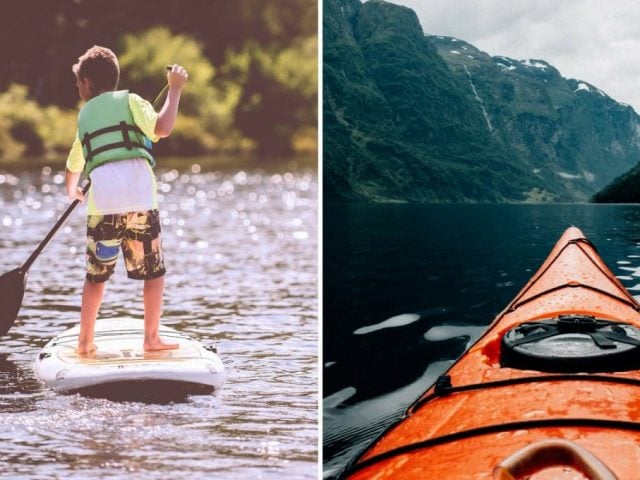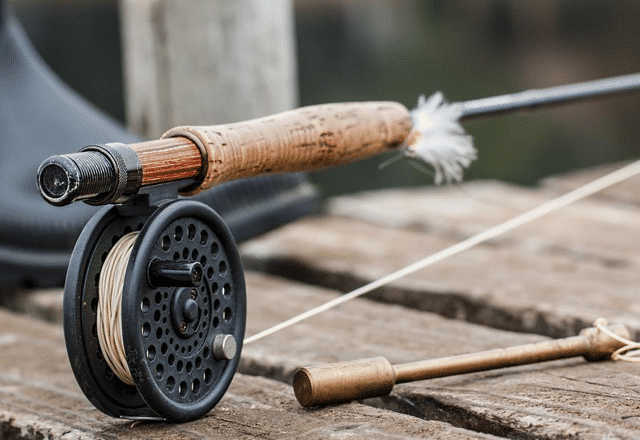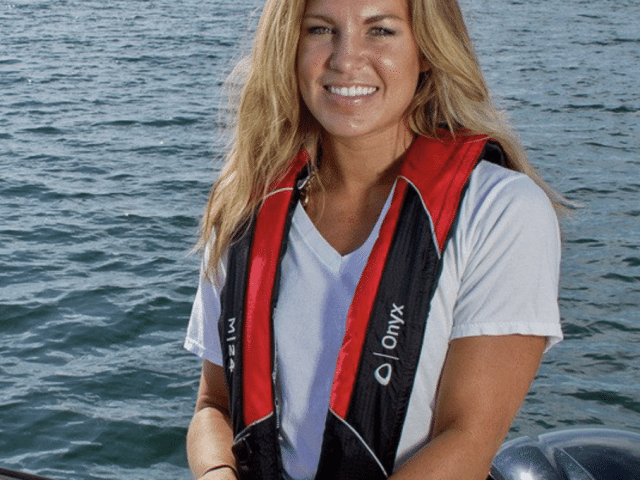Stand up paddleboarding (SUP) is usually considered a solo sport. However, bringing your kids on board is a fun way for you to share your hobby with your little ones. Taking your kids paddleboarding introduces them to a new sport, allows them to appreciate the outdoors, and helps them build strength and stability, all while bonding with you.
Paddleboarding with kids is completely different from riding solo. Taking children with you means being more alert, bringing different equipment, and adjusting your technique. Consider the following tips before hitting the water to ensure a safe and rewarding adventure with young travelers.
Be Comfortable with Your Skill Level
If you’re considering paddleboarding with children, you’re probably an experienced rider already. It’s important to be confident in your skill level before bringing another person with you.
Aside from adding 30 to 50 pounds of weight, think about how you’ll adjust to a child’s movement. While some kids are great at sitting still, it’s inevitable that they’ll get excited about something or move too fast and throw you off balance.
If you’re confident in your abilities, you’ll be able to react quickly and manage your weight plus the added mass of a wiggly child.
Be Confident in Your Child

Being comfortable with your child’s maturity level, ability to follow directions, and physical ability goes hand-in-hand with understanding your own skill level.
Most parents wait to take their kids paddleboarding until they’re older and know how to swim. Since there’s always a risk of falling, it’s important to trust that your kids will follow directions on and off the board. .
Whenever you decide to bring your kids on board, make sure it’s something they’ll enjoy and will be able to sit through. There’s nothing worse than making a disinterested kid sit still while you paddle around a lake. Don’t worry, though. Most kids will think this is the coolest thing you’ve ever done.
Choose the Right Paddleboard
If you’re buying a new board to accommodate your kids, ensure that its weight capacity is rated for your combined weight. Keeping in mind that kids grow quickly and require you to bring along extra gear, choose a larger, more buoyant paddleboard.
A wider, longer paddleboard, such as a yoga or fitness board is ideal for paddleboarding with kids. Soft top boards and paddleboard yoga mats provide a comfortable surface for your child to sit on.
If you already own a board, but are concerned it may be too unstable, you can invest in a set of SUP stabilizers. These inflatable “training wheels” mount to the rails of your paddleboard, providing additional stability.
Get Your Kids Used to Paddleboarding

Familiarize your kids with the paddleboard by starting them out on land. With the fins off, set the board on a patch of grass or on the sand and let your child get used to sitting and standing on the paddleboard.
Once you’re comfortable on land, walk your board into knee-high water. Start by setting your child on the paddleboard slightly in front of where you’d normally stand. Repeat the same steps as you did on land, letting them become familiar with the instability of the board on the water.
When you get on your board, start out in a kneeling position. Paddle until you’re comfortable with the added weight of your child, then stand up slightly behind where you’d normally place your feet. Play around with your positioning until you find an ideal balance point. Expect your child to move around, and prepare to shift your balance as needed.
Safety Considerations
Whenever you bring your child on the water, outfit them with the appropriate safety gear, including a personal flotation device (PFD) and a whistle. If you choose to use a leash, teach your child how to use the quick release feature so they won’t get tangled if they fall.
Start out in calm, shallow waters while they adjust to being on the board and you adjust to having them with you. Avoid taking your kids out on windy days and always check the weather forecast before you go.
Teach your kids how to fall correctly and explain the hazard of falling on the board’s surface. Demonstrate falling to the side of the board and encourage them to be OK with hitting the water. Stay close to shore, and practice falling and getting back on the board together. This will help your child remain calm if he or she falls off in deeper water.
What to Bring
Kids might get bored on longer trips, so bring their favorite beach toys, buckets, fishing nets, or even a small paddle for them to play with.
Always pack extra water and snacks, even if you’re planning on going out for a short while. You’d be surprised at how much longer a well-fed kid will want to stay out!
Don’t forget sunscreen, hats, and protective clothing. With the sun reflecting off the water’s surface, your child may be more prone to getting a sunburn.
Keep It Interesting

Think of paddleboarding as a new opportunity for your child to learn and experience the outdoors every time you take them out. Start with short trips to keep their interest, and slowly work your way up to longer rides.
Research new places nearby to take your kids. If you have an easily accessible spring, bring snorkel equipment and let your kid explore the caves when you arrive. If you’re in a lake or lagoon, challenge them to catch small fish with a net. In Florida, there’s a lake with access to watch Legoland’s waterski show. Before you know it, they’ll be asking for their own board!
Paddleboarding with kids is challenging, but very rewarding. Every trip is an opportunity to teach your child about ecology, wildlife, and geography. You’ll be surprised at how much more patient and curious children can be on the water. Leave us a comment and let us know if you take your kids paddleboarding. What tips do you have for other parents?





